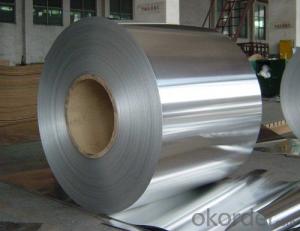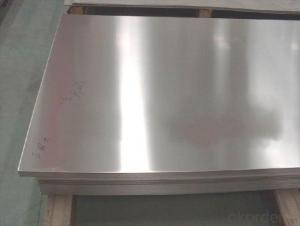5083-H116 Aluminum Plate
5083-H116 Aluminum Plate Related Searches
Led Light Bulbs For Ceiling Fixtures Led Lamps For Ceiling 42 In Ceiling Fan With Light Aluminum Coil Stock For Gutters Aluminum Foil For The Grill Hole Saw For Aluminum Plate Aluminum Tread Plate For Trailer Bow Plate For Aluminum Boat Aluminum Foil For Grow Room Aluminum Foil For Joint PainHot Searches
Stock Price For Aluminum Aluminum Coil Stock For Sale Aluminum Gutter Coil For Sale Used Aluminum Scaffolding For Sale 1/4 Aluminum Plate For Sale Aluminum Bar Stock For Sale Aluminum Round Stock For Sale Aluminum Diamond Plate For Sale Aluminum Scaffolding For Sale Craigslist 6061 Aluminum Plate For Sale Aluminum Dock Plate For Sale 7075 Aluminum Plate For Sale Aluminum Tread Plate For Sale Aluminum Checker Plate For Sale Aluminum Plate For Sale Near Me Plate Aluminum For Sale Aluminum Plate For Sale Aluminum Square Stock For Sale Aluminum Flat Stock For Sale Billet Aluminum Stock For Sale5083-H116 Aluminum Plate Supplier & Manufacturer from China
Okorder.com is a professional 5083-H116 Aluminum Plate supplier & manufacturer, offers integrated one-stop services including real-time quoting and online cargo tracking. We are funded by CNBM Group, a Fortune 500 enterprise and the largest 5083-H116 Aluminum Plate firm in China.Hot Products
FAQ
- Yes, there are limitations to the maximum coil diameter of aluminum coils. The maximum coil diameter is determined by several factors including the type and thickness of the aluminum, the equipment used for coiling, and the intended application of the coil. Generally, larger coil diameters can be achieved with thinner and more ductile aluminum alloys. However, as the coil diameter increases, it becomes more challenging to maintain the structural integrity of the coil and prevent deformation, wrinkling, or damage during handling and transportation. Additionally, the equipment used for coiling may have limitations in terms of the maximum diameter it can handle. Therefore, it is important to consider these factors when determining the maximum coil diameter for aluminum coils.
- Yes, aluminum coils can be used in electrical or electronic applications. Aluminum is a highly conductive material and has several advantages over other materials, such as copper, when it comes to coil applications. Aluminum coils are lightweight, which makes them suitable for applications where weight is a concern. They also have good thermal conductivity, allowing for efficient heat dissipation. Additionally, aluminum coils are corrosion-resistant, making them durable and suitable for outdoor or high-humidity environments. However, it is important to note that aluminum has a lower electrical conductivity compared to copper, so the design and dimensions of the coil need to be carefully considered to ensure optimal performance.
- How is the welding performance of 3003 aluminum coil?
- 3003 aluminum coil, a kind of rust-proof aluminum, belongs to AL-Mn series alloy. With low intensity (slightly higher than commercial purity aluminum), it cannot endure heat treatment, so cold processing is adopted to increase its mechanical property: high plasticity in annealing and semi-cold hardening, low plasticity in cold hardening, good corrosion resistance., good weldability and bad machinability. It is mainly used for low load part in liquid or gaseous medium requiring high plasticity and good weldability, such as fuel tanks, gasoline or lubricant conduit. It can also be used for liquid containers and other deep drawing small load parts made by deep drawing. Aluminum wire can be used to make the rivet.3003 aluminum sheet has good formability, weldability and corrosion resistance. It is used to process parts which require good formability, corrosion resistance and weldability and lower intensity than 1xxx series alloy, such as such as kitchenware, food and chemical products processing and storage equipment, groove and tank to transport liquid product, pressure vessel and pipe processed from thin plate, cooling fin, make-up board, photocopier rollers and ship material.
- Patterned aluminum coils have a wide range of potential applications across various industries. One of the main uses of patterned aluminum coils is in the construction industry. These coils can be used for roofing, siding, and cladding applications. The patterned surface helps to enhance the aesthetic appeal of buildings and can also provide additional strength and durability. Another potential application of patterned aluminum coils is in the transportation industry. These coils can be used for manufacturing automotive parts such as body panels, trims, and decorative accents. The patterned surface adds a unique and stylish look to vehicles while also providing corrosion resistance and lightweight properties. Patterned aluminum coils can also be utilized in the manufacturing of household appliances and furniture. They can be used for creating decorative panels, cabinets, and countertops. The patterned surface can add a modern and sophisticated touch to these products, making them more visually appealing to consumers. Additionally, patterned aluminum coils have applications in the packaging industry. They can be used for manufacturing packaging materials such as cans, containers, and lids. The patterned surface can make the packaging more eye-catching, helping to attract customers and increase sales. Furthermore, patterned aluminum coils can be used in the production of signage and advertising materials. The patterned surface offers a unique and attention-grabbing appearance, making it ideal for creating signage that stands out and effectively communicates messages. Overall, the potential applications of patterned aluminum coils are vast and varied. From construction to transportation, household appliances to packaging, and signage to advertising, these coils offer a versatile solution for enhancing aesthetics, durability, and functionality in various industries.
- I am so confused right know. I want to cook something using an aluminium foil. Is the reflective side supposed to be inside or outside?
- I always place my food on the dull side... but check out Reynolds FAQs Frequently Asked Questions Which side of Reynolds Wrap? Aluminum Foil should I use, the shiny or the dull side? Actually, it makes no difference which side of the aluminum foil you use—both sides do the same fine job of cooking, freezing and storing food. The difference in appearance between dull and shiny is due to the foil manufacturing process. In the final rolling step, two layers of foil are passed through the rolling mill at the same time. The side coming in contact with the mill's highly polished steel rollers becomes shiny. The other side, not coming in contact with the heavy rollers, comes out with a dull or matte finish. The exception is when using Reynolds Wrap? Release? Non-Stick Aluminum Foil. The non-stick coating is applied during manufacturing to the dull side of the foil. Always place the non-stick (dull) side toward the food.
- The maximum coil diameter for aluminum coils can vary depending on the specific application and industry standards. However, in general, aluminum coils typically have a maximum diameter of around 72 inches (6 feet) to ensure ease of handling and transportation.
- Two days ago, my cocker spaniel ate most of a small aluminum bread pan--the disposable kind you can buy in the supermarket. The pieces I picked up when I discovered what he'd done were sharp, so I called the vet (right before closing), who recommended just keeping an eye on him for nausea, diarrhea, etc. The next morning I brought the dog and he showed no discomfort, but the vet put him on an antibiotic (esp. for gastric problems) just in case. It's been 48 hours, and the dog's still happy and eating and drinking, and when we go for a walk, his poo is fine (yep; I examine it!) ... if he's passed the aluminum, it must have been in the back yard when he was out on his own, and not on a walk. However, I'm still very anxious. At what point can I draw a sigh of relief? Thank you!
- Aluminum will pass just like food. It will empty from the stomach and go through the digestive tract. Hopefully he chewed up the pieces so that they are small and are at no risk of cutting his intestines or bowels. But if he is not yet showing discomfort, all should be well. You made the smart choice and called the vet, and if they do not seem too worried you shouldn't be either unless your pooch begins acting differently or seems to be in discomfort.
- I did a activity series lab and on my data table, it shows that lead reacted more than aluminum did, but aluminum is more active than lead. So, why does it show that lead is more active when it really isn't? Is it human error?
- Aluminum is more active than lead. You should double check your activity data table. If you confirm that the table says that lead is more active than aluminum, the table is in error.













































